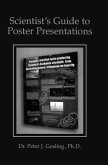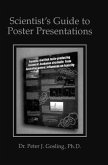Embryo drawing refers to any representation of the illustration of embryos in their developmental sequence. In plants and animals, an embryo develops from a zygote, the single cell that results when an egg and sperm fuse during fertilization. In animals, the zygote divides repeatedly to form a ball of cells, which then forms a set of tissue layers that migrate and fold to form an early embryo. Images of embryos provide a means of comparing embryos of different ages, and species. To this day, embryo drawings are made in biology undergraduate developmental biology lessons. Drawing of the head of a four week old human embryo. From Gray's Anatomy. Comparing different embryonic stages of different animals is a tool that can be used to infer relationships between species, and thus biological evolution. This has been a source of quite some controversy, both now as in the past. A biologist who pioneered in this field was Ernst Haeckel. By comparing different embryonic stages of differentvertebrate species, he formulated the Recapitulation theory. This theory states that an animal's embryonic development follows the exact same sequence as the sequence of its evolutionary ancestors.
Bitte wählen Sie Ihr Anliegen aus.
Rechnungen
Retourenschein anfordern
Bestellstatus
Storno








